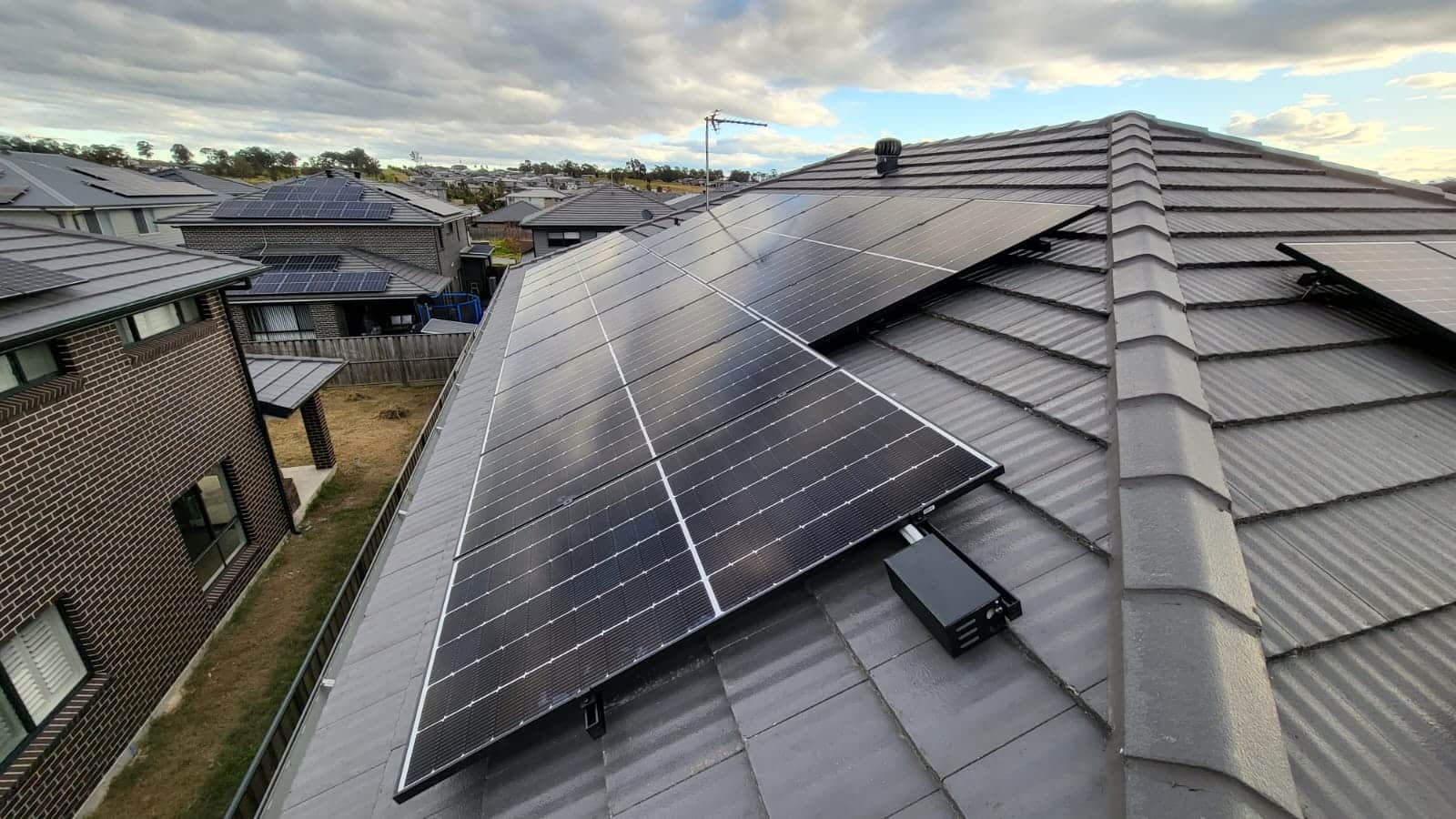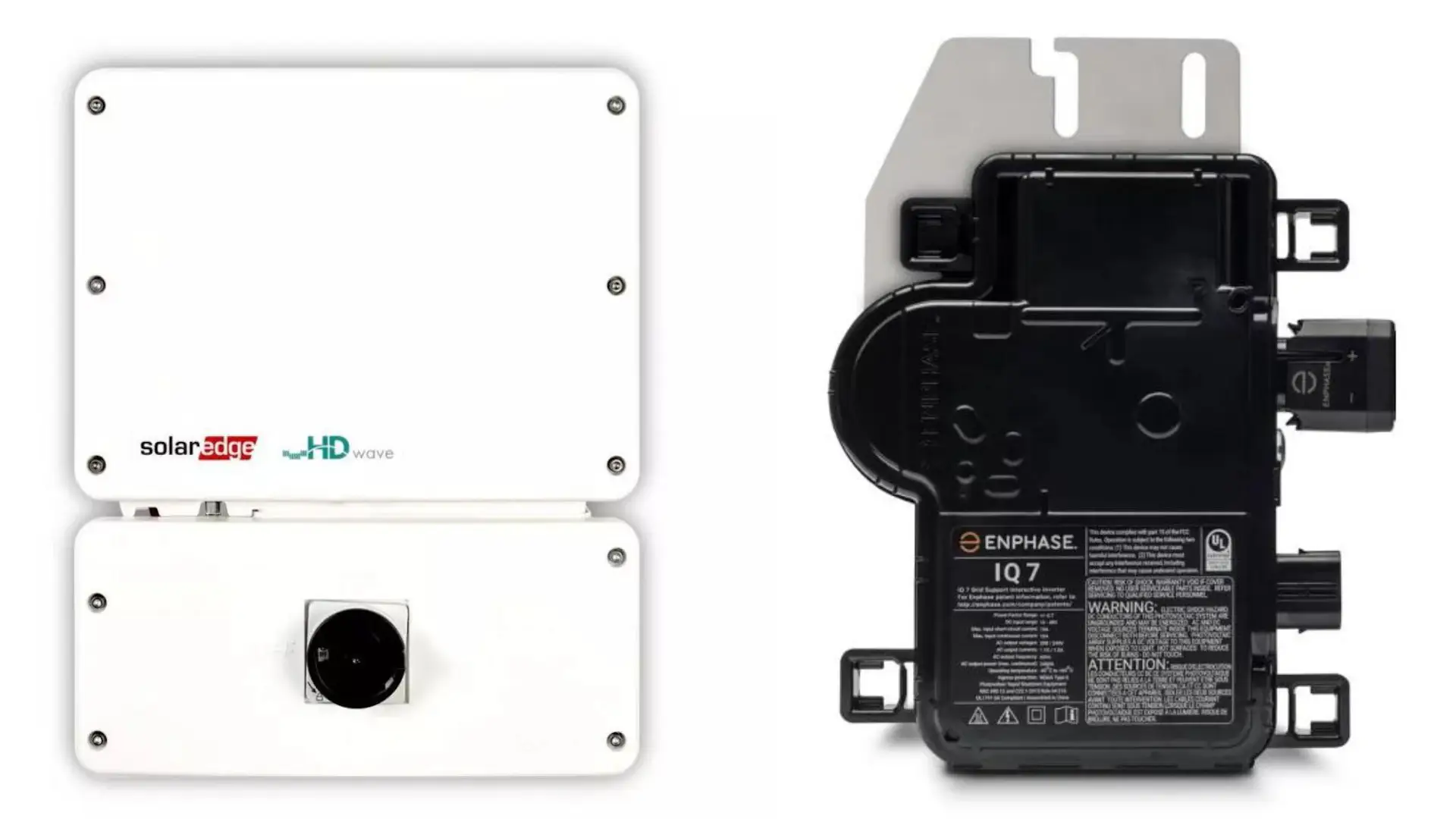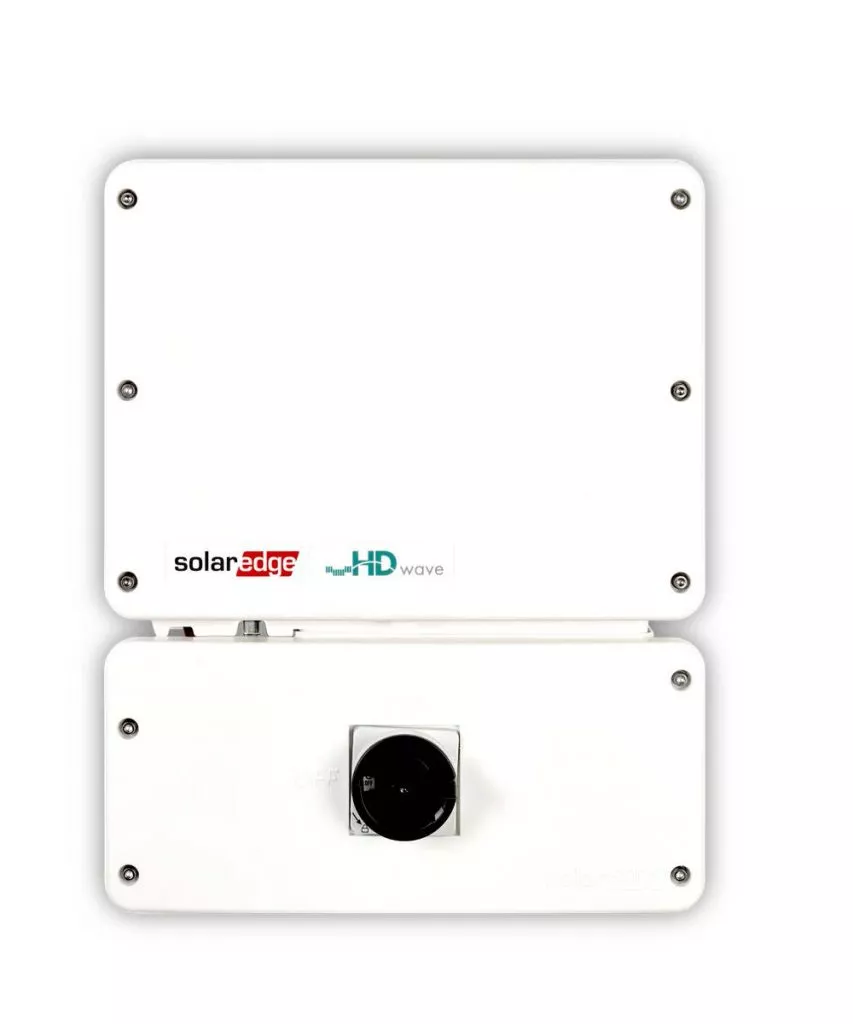
Enphase vs SolarEdge vs A Standard String Inverter
Solar inverter technologies each have their own strengths and unique features. Some offer better efficiency, while others provide more flexibility or are designed for specific home setups.
With so many options available, it can be challenging to determine which one truly suits your home. After all, not every home is the same, and what works well for one might not be the best fit for another.
To provide clarity on this topic, we will discuss and compare three popular inverter systems: the standard string inverter, SolarEdge, and Enphase. By the end, you will understand how each system works and which one is the ideal choice for your home.
Key Takeaways:
Standard String Inverters are Affordable but Limited
Standard string inverters are widely used because they’re cost-effective and simple to install. However, their biggest drawback is that all panels are treated as a single unit. If one panel underperforms (due to shade, dirt, or damage), the entire system’s performance suffers.
SolarEdge Balances Efficiency and Visibility
This setup improves efficiency and allows you to monitor each panel's output. It’s a solid middle-ground solution for homeowners who want better performance than a standard string inverter without the premium price of microinverters. However, system expansion is limited by the inverter’s capacity.
Enphase Offers Flexibility, Safety, and Reliability
Enphase are suited for homes with complex rooflines or partial shading. It is more expensive, but they’re easier to expand, more resilient against single-point failures, and provide long-term reliability.
Enphase and SolarEdge Work Well with AC-Coupled Batteries
If you're planning to add a home battery, Enphase and SolarEdge systems are compatible with AC-coupled batteries such as the Tesla Powerwall or Enphase IQ Battery.
Difference Between Standard Solar Inverter, SolarEdge and Enphase

Standard String Inverter
A standard string inverter is one of home solar systems' most common inverter technologies. One of its biggest drawbacks is that if one panel underperforms, the whole system suffers.
In these situations, the output of the whole "string" can drop to match the weakest panel. These systems are less expensive but have fewer features and are less efficient.

SolarEdge System
A SolarEdge system uses a central inverter paired with DC optimisers installed on each panel. The DC power generated by the panels is sent to the central inverter to be converted into AC power.
SolarEdge allows for some flexibility, but the system isn't as expandable as Enphase. Also, it should be installed near the meter board.

Enphase System
With an Enphase system, each solar panel has its small microinverter installed underneath it. This design eliminates the need for a large central inverter, making it a safer and more flexible option.
The conversion from DC to AC power happens at the panel level, so you can design a system with panels facing different directions and orientations without losing efficiency.
Standard String Inverter Price vs Enphase Price
By standard, we are talking about a string inverter from a reputable European manufacturer such as SMA or Fronius.
These brands have been producing good-quality inverters for the Australian market, and despite the limitations of a string inverter from a technical standpoint, the product itself gets the job done and costs less to install.
Because an Enphase system requires one microinverter per panel, it is fair to say that the larger the system, the larger the premium required to go with an Enphase system.
It is important to keep in mind that the larger the system, the bigger the potential savings on your power bill, so although it costs more for a larger Enphase system, most of our customers still choose Enphase.
For example, if a 10kW system can save you up to about $4000 a year on your power bills, then the premium for an Enphase system will pay for itself in less than 2 years. This makes it a very attractive option considering the benefits that come with an Enphase system, including the longevity of an Enphase microinverter vs a string inverter. Enphase microinverters are designed to last as long as the panels, whereas a string inverter has a life of about 5 to 12 years, depending on the brand.
Better inverters, such as the ones from Fronius and SM, typically last longer than 10 years, but then, when they break, it will cost around $5000 or so to replace them. This in itself is normally enough to justify going with an Enphase system.
Enphase Price vs SolarEdge Price
Enphase and SolarEdge systems are fairly similar in terms of their position in the market; however, in terms of their price, there are two key differences:
With a SolarEdge system, a DC optimiser is much cheaper than an Enphase Microinverter, and so the larger the system, the cheaper it becomes for SolarEdge vs Enphase
A SolarEdge system requires an inverter to be installed near the meter board, and so the base price of the system is higher than an Enphase system.

Because of the way the systems are designed, it is fair to say that the larger the system, the cheaper a SolarEdge system is compared to Enphase, however, there isn’t a huge difference in price for residential systems:
6.6kW Solar System: An Enphase system will cost about $2500 more than a SolarEdge system
10kW Solar System: An Enphase system will cost about $3000 more than a SolarEdge system
13kW Solar System: An Enphase system will cost about $4000 more than a SolarEdge system
More information: The price of Enphase vs SolarEdge or a standard string inverter system
In terms of longevity, the SolarEdge inverter is designed to last longer than a string inverter, however, it will probably still need to be replaced once during the lifetime of the panels. With an Enphase microinverter, it is fair to say that it is cheaper to replace a broken microinverter, however, if multiple microinverters fail over the span of some years, that would be an inconvenience to have to continually replace them.
Why Standard String Inverters May Not Be Enough
Not every home is built the same, and when it comes to solar, that matters. Maybe your roof has a few different angles and limited usable roof space. Maybe you’ve got a tall tree casting shade in the afternoon. Perhaps you are considering future expansion by adding more panels as your energy needs grow. These situations are where a standard string inverter struggles to keep up.
Moreover, troubleshooting is tougher. If a single panel starts underperforming, there’s no panel-level visibility. You’d have to inspect each one individually to find the issue, which makes maintenance time-consuming and guesswork-heavy.
For homeowners who want a more flexible, high-performance setup, Enphase and SolarEdge systems offer a more adaptable solution.
SolarEdge vs Enphase System Comparison
For many years now, nearly all 1KOMMA5° customers have chosen to install either a SolarEdge system or an Enphase system. It’s what we call Smart Solar, and they are currently the best two systems in Australia.
But what are the main differences between the two systems, and which one is right for you? Let’s go through the main differences to help you decide.
SolarEdge vs Enphase: How Do the Systems Work?
Solar panels produce DC power, so all home solar systems need an inverter to convert the DC power to AC so that it is compatible with everything in your home.
With an Enphase system, there is one small microinverter that is installed underneath each panel. That means there is no large inverter installed down by the meter board, and it means the cable running from the panels to the inverter is also AC, which is much safer.
With a SolarEdge system, the DC power is sent down to a central inverter, which is called the HD Wave. It is one of the most efficient inverters in the market.
The Pros Of Microinverters vs DC Optimisers
First up, the biggest difference. An Enphase system converts DC to AC underneath each panel, which means the panels are truly independent of the others. This gives the following advantages:
Complete flexibility with system design. You can have 10 panels facing North, 3 facing West, and 3 facing East, for example. In most cases a SolarEdge system will also be flexible in that we can install panels on different roof spaces, however, there are some small issues to do with the panel-level optimisation that our design team needed to factor in.
You can add panels to the array at a later date. Many of our Enphase customers that add battery storage will also add some solar panels to increase the output of the solar system to match their 24-hour power consumption.
No need for DC isolator safety switches, a piece of hardware that ironically is the biggest fire risk in a standard solar system – if water gets into the switch it can cause an arc fault and catch fire. The good news is that things are getting fixed with new legislation so in the future, this will be less of an issue.

Because a SolarEdge system sends DC power down to a central inverter, the system isn’t really expandable, because in nearly all cases the panel array will be matched to the size of the inverter, for example, an 8kW array of panels on an 8kW inverter. To add more panels to a system like this we would need to either replace the inverter or install a 2nd system alongside the original one.
A Single Point Of Failure vs Multiple Points

It’s something that gets talked about a lot, is it better to have 1 potential point of failure or multiple?
With a SolarEdge system, the DC Optimisers are very reliable, they are relatively easy to replace, and they come with a 25-year warranty. The most likely component of a solar system to fail is the inverter. In this case, the system will need to be turned off until the inverter is replaced. The inverter comes with a 12-year warranty and SolarEdge has good local support here in Australia.
With an Enphase system, there is no central weak point in the design of the system, and so if one microinverter or panel fails, the rest of the system can stay on until the fault is fixed. This dramatically increases the average uptime of an Enphase system.
The risk, of course, is that with one microinverter per panel multiple units fail over a period of a few months or years. Fortunately, Enphase Microinverters have proven to be extremely reliable over the years that we have been installing them. We have installed over 75,000 microinverters in Australia and have had significantly fewer service issues compared to all other brands.
Talking Of Failures… Heat Tolerance?
We are only including this because for some reason we get asked about it a lot. Do microinverters survive the heat up on the roof?
The answer is yes, Enphase has never had a microinverter fail because of heat. More information is available here.
The SolarEdge DC Optimisers are also fine. Heat isn’t an issue for either system.

SolarEdge Warranty vs Enphase Warranty

Both systems have much better warranties compared to a standard string inverter. At this point, it is worth reminding ourselves that we are comparing the best two solutions on the market. Both companies offer top-notch warranty support and customer service here in Australia.
The SolarEdge inverter has a 12-year warranty, and the DC Optimisers have a 25-year warranty.
The Enphase microinverters have a 10-year warranty. This can be extended to 15 years or even 25 years. As a Platinum Enphase Partner, 1KOMMA5° is able to offer our customers good pricing on warranty extensions, so if this is something you want to investigate further, just let our representative know when they are doing up your quote.
Battery Compatibility of SolarEdge vs Enphase Systems
1KOMMA5° installs AC-coupled solutions such as the Tesla Powerwall or Enphase IQ Battery due to the flexibility, reliability and safety of an AC-coupled battery. For this reason, all of our systems including Enphase and SolarEdge are compatible with battery storage.
Our Enphase customers are adding either the Tesla Powerwall or the Enphase IQ Battery to their system when they choose to add battery storage.
The Tesla Powerwall is AC-coupled, which basically means the battery is connected directly to the meter board and then the Tesla Gateway manages the battery, the solar, and the home. Tesla Powerwall offers blackout protection and with both an Enphase or a SolarEdge system, the battery can recharge from the solar day after day if there is an extended blackout.
SolarEdge systems are also compatible with their own SolarEdge battery, with the solar connecting with the battery on the DC side of the inverter, known as DC-coupling.

Performance of SolarEdge vs Enphase
There are blog posts out there that go into incredible detail about the technical aspects of one system vs the other. Things like start-up voltage, clipping, conversion efficiency and on and on.
The reason we don’t like getting into all of this is that we are talking about a few cents a day difference in the savings on your power bill, which is what really matters. Over the years, we have seen dramatic under-performance in systems, either because of cheap solar panels under-performing or installers messing up the design of a system where panels are installed where they shouldn’t be.
If you are worried about performance, as you should be, the most important factor to guarantee success is to buy good quality panels and choose an installer that has a reputation for quality installations.
Having installed more Smart Solar Systems than anyone else in Australia, including both Enphase and SolarEdge, our design teams know what is going to work best for your roof. Yes, we can work with you to make sure you generate as much solar power as possible when you need it, however, we are also going to make sure the system is designed properly.
Which System Is Better in Australia?
Over the years, our customers have chosen Enphase over SolarEdge most of the time, however, we install a lot of SolarEdge systems every week of the year, and they are a great solution.
Again, there are some limitations that prevent us from installing SolarEdge systems on some homes where the roof requires additional flexibility in the design of the panel array, or if a larger 3-phase system is to be installed.
Often information like this generates more questions, so for more information please do reach out to the 1KOMMA5° Team on 130 525 451. We would be happy to provide more personalised information and pricing for an installation on your home or business.
More Helpful Articles:

1KOMMA5° Blog
Need more information?
Head over to the 1KOMMA5° blog for more helpful tips and other important guides on everything solar, from inverters, panels and batteries to how to make the most of your investment for years to come.